#Microlearning
Photo
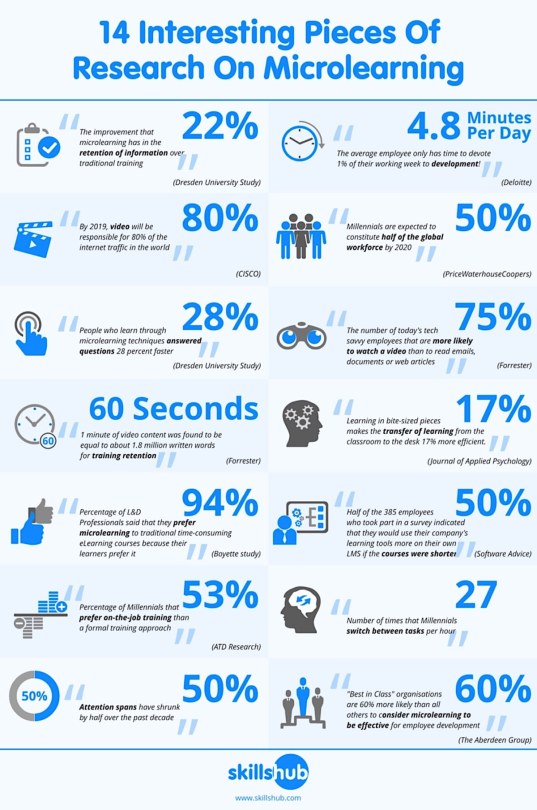
Microlearning focuses on breaking down information into concise and easily digestible chunks, typically ranging from a few minutes to 15 minutes.
(via 14 fun facts about microlearning (infographic))
41 notes
·
View notes
Text
#science#space#outer space#solar system#space aesthetic#galaxy#did you know#universe#planets#microlearning#learn new skills#fun facts#education#educate yourselves#get educated
5 notes
·
View notes
Photo

Microlearning is the Future of Workplace Training
Having trouble reading infographic here?
Check out the full size infographic at - https://infographicjournal.com/microlearning-is-the-future-of-workplace-training/
9 notes
·
View notes
Text
Microlearning – Giải pháp e-Learning mang đến thành công cho các doanh nghiệp
Microlearning là một hình thức đào tạo thông qua các module học tập nhỏ, có thời gian vừa phải với lượng thông tin cần thiết giúp người học đạt được mục tiêu học tập của mình.
Có thể nói, Microlearning chính là giải pháp e-Learning mang đến thành công cho các doanh nghiệp!
Khám phá thêm những thông tin hữu ích về Microlearning và những lợi ích của nó trong đào tạo doanh nghiệp tại đây: https://oes.vn/microlearning-giai-phap-elearning-mang-den-thanh-cong-cho-cac-doanh-nghiep/
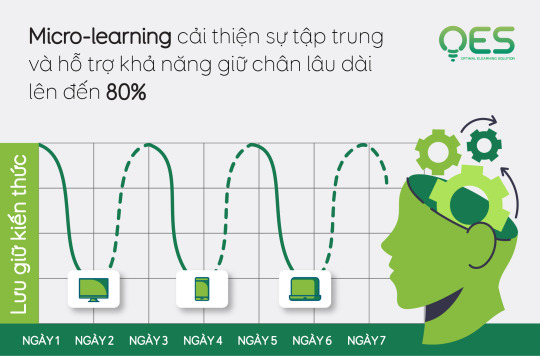
2 notes
·
View notes
Text
MaxLearn Methodology: Elevating Learning with Powerful Microlearning

In the dynamic landscape of education and professional development, traditional methods of learning are being reshaped by innovative approaches tailored to the needs of modern learners. At the forefront of this revolution is the MaxLearn Methodology, a comprehensive framework designed to harness the potential of microlearning for impactful learning experiences.
Understanding Microlearning
Microlearning has emerged as a leading strategy for delivering focused and concise learning experiences. Unlike traditional lengthy courses, microlearning breaks down complex topics into bite-sized modules, typically ranging from a few minutes to around 15 minutes in duration. This approach accommodates the fast-paced lifestyles of learners while maximizing retention and engagement.
The Core Principles of MaxLearn Methodology
The MaxLearn Methodology builds upon the foundation of Microlearning and incorporates a set of core principles aimed at delivering powerful and effective learning experiences:
1. Personalization: Recognizing that every learner is unique, the MaxLearn Methodology prioritizes personalization. By leveraging learner data and preferences, content is tailored to meet individual needs and learning styles. Whether it's providing targeted recommendations or adapting the pace of learning, personalization enhances engagement and motivation.
2. Interactivity: Engagement is essential for effective learning, and interactivity lies at the heart of the MaxLearn Methodology. Through interactive elements such as quizzes, simulations, and branching scenarios, learners are actively involved in the learning process. This hands-on approach fosters critical thinking, problem-solving skills, and decision-making abilities.
3. Micro-Assessments: Assessment is an integral part of the learning journey, and the MaxLearn Methodology integrates micro-assessments seamlessly into the experience. These brief quizzes, knowledge checks, and performance evaluations allow learners to gauge their understanding and progress in real-time. Immediate feedback empowers learners to identify areas for improvement and reinforce learning objectives.
4. Just-In-Time Learning: In today's fast-paced world, access to timely information is crucial. The MaxLearn Methodology embraces just-in-time learning, delivering relevant content precisely when learners need it most. Whether it's troubleshooting a problem at work or mastering a new skill on the go, MaxLearn provides on-demand resources that empower learners to succeed in real-world situations.
5. Gamification: Learning should be engaging and enjoyable, and gamification is a powerful tool employed by the MaxLearn Methodology to achieve this. By incorporating game-like elements such as points, badges, and leaderboards, learning becomes an immersive experience that inspires motivation and fosters healthy competition among learners.
6. Mobile Accessibility: With the widespread use of smartphones and tablets, learning is no longer confined to the desktop. The MaxLearn Methodology ensures mobile accessibility, allowing learners to access content anytime, anywhere. Whether commuting to work or waiting for a meeting, valuable learning opportunities are just a tap away.
Webinar Details :
Ask almost any employee, and they’ll tell you, “It’s long, it’s boring, and most of the stuff I know already.” In this webinar, we will show compliance learning can be fast, fun, and effective.
We will cover:
Micro-targeting based on risk profiling–Integrating compliance risks to job functions to deliver training to the employees who need it.
Learning Goals—Automated assignment of the right learning levels to the right employees as Goals.
Microlearning—Use of short bursts of learning targeted at specific learners based on their risk profile.
Knowledge Growth and Retention—Use of adaptive spaced repetition of content to allow information to be retained and knowledge to grow over time.
Reward and Recognition—Game mechanics at play to promote learner engagement.
We invite you to our groundbreaking discussion on how to deliver fast, fun, and effective risk-specific compliance training.
Reinvent Compliance Training–
Using Microlearning With
A Risk-Specific Approach
May 7th 2024
9:00 am CST/ 10:00 am EST
45 mins
Register Now!
Unlocking Potential, One Byte at a Time
In conclusion, the MaxLearn Methodology represents a paradigm shift in the way we approach learning and development. By leveraging the power of microlearning and incorporating principles of personalization, interactivity, assessment, just-in-time learning, gamification, and mobile accessibility, MaxLearn empowers learners to unlock their full potential.
Whether you're an individual seeking to expand your knowledge or an organization aiming to enhance employee performance, the MaxLearn Methodology offers a powerful solution that delivers results. Embrace the future of learning with MaxLearn and embark on a journey of continuous growth and development.
#microlearning#micro learning#adaptivelearning#adaptive learning#aifortraining#ai for training#learningpersonalization#learning personalization#microlearningplatforms#microlearning platforms#ailms#ai lms#adaptivelearningplatforms#adaptive learning platforms#gamifiedlms#gamified lms#lmswithgamification#lms with gamification#lmswithai#lms with ai#adaptivelearningsoftware#adaptive learning software#adaptivelearningtechnology#adaptive learning technology#gamifiedlearningmanagementsystem#gamified learning management system#learningmanagementsystemgamification#learning management system gamification#artificialintelligencelearninganddevelopment#artificial intelligence in learning and development
0 notes
Text
Empowering Sales Teams: How Microlearning LMS Transforms Sales Training
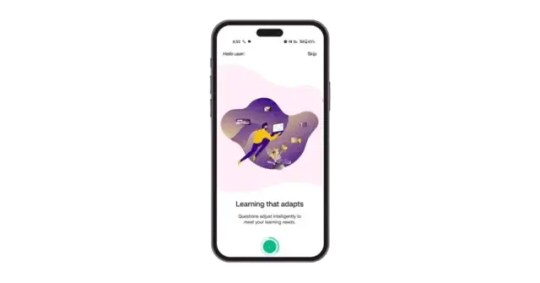
Microlearning and Learning Management Systems (LMS) have transformed the way businesses train their sales teams. In today's fast-paced business environment, traditional training methods, with their lengthy sessions and dense content, often prove inefficient and hard to retain. Microlearning, with its focus on bite-sized, easily digestible content, is emerging as a more effective approach to sales training. When combined with LMS, microlearning offers a powerful tool to boost sales team performance. This article explores the benefits and best practices of using microlearning LMS for sales training, providing insights into its advantages and implementation strategies.
What is Microlearning?
Microlearning is an educational approach that delivers content in small, focused segments. Typically, microlearning modules are brief—ranging from a few seconds to a few minutes—and concentrate on a specific topic or skill. This structure allows learners to absorb information quickly and retain it more effectively.
Microlearning can take various forms, including:
Short Videos: Concise videos that demonstrate a skill, concept, or product feature.
Interactive Quizzes: Engaging quizzes to test knowledge and reinforce learning.
Infographics: Visual representations of information, making complex concepts easier to understand.
Podcasts: Audio content for learning on the go.
Simulations: Interactive scenarios that allow learners to practice skills in a risk-free environment.
The flexibility and versatility of microlearning make it an ideal approach for sales training, where salespeople often have limited time for formal education and require information that can be quickly applied in real-world scenarios.
Understanding Learning Management Systems (LMS)
An LMS is a software platform designed to facilitate the creation, delivery, and management of educational content. It provides a centralized location for learners to access training materials, complete assignments, and track their progress. LMS platforms offer a range of features that enhance the learning experience, such as multimedia support, customizable learning paths, and social learning capabilities.
In the context of sales training, an LMS plays a pivotal role by:
Delivering Content: LMS platforms allow for seamless distribution of training materials, making them accessible to sales teams regardless of location.
Tracking Progress: LMS provides tools for tracking learner progress, allowing managers and trainers to monitor performance and identify skill gaps.
Enabling Collaboration: Social learning features, such as discussion forums and chat functions, enable sales teams to collaborate and share knowledge.
Supporting Continuous Learning: LMS platforms facilitate ongoing learning by allowing for easy content updates and providing a platform for continuous skill development.
The Benefits of Microlearning LMS for Sales Training
Microlearning LMS offers numerous benefits for sales training, contributing to improved learning outcomes, increased engagement, and enhanced sales performance. Here are some key advantages:
Enhanced Knowledge Retention
Microlearning's focus on delivering concise and relevant content makes it easier for learners to retain information. By breaking complex topics into manageable segments, microlearning reduces cognitive overload, allowing sales professionals to absorb key concepts without feeling overwhelmed. The repetitive nature of microlearning also aids retention, as learners can revisit modules to reinforce their understanding.
Flexibility and Accessibility
Microlearning LMS offers unparalleled flexibility, allowing sales teams to access training content from any location, at any time. This is particularly valuable for sales professionals who travel frequently or work remotely. The accessibility of microlearning LMS ensures that training is not disrupted by geographical constraints, allowing salespeople to continue their learning journey without interruption.
Improved Engagement
Microlearning's interactive and multimedia-rich content engages learners in a way that traditional training methods often fail to achieve. Videos, quizzes, and simulations are not only informative but also entertaining, capturing learners' attention and keeping them engaged. This increased engagement leads to higher participation rates and more enthusiastic learners, which translates into better sales performance.
Cost-Effective Training
Microlearning LMS is a cost-effective solution for sales training. It eliminates the need for expensive large-scale training events, travel expenses, and printed materials. Organizations can create and update digital content quickly and at a lower cost. This approach also reduces downtime for sales teams, as they can complete training at their own pace, minimizing time away from their core sales activities.
Customization and Personalization
An LMS allows organizations to customize learning paths based on individual roles, skill levels, and objectives. Sales teams can choose the modules that align with their specific needs, creating a personalized learning experience. This customization fosters a sense of ownership over the learning process and motivates learners to achieve their goals. Additionally, personalized learning paths can accommodate different learning styles, making training more effective for a diverse sales team.
Real-Time Tracking and Reporting
LMS platforms offer real-time tracking and reporting capabilities, allowing managers and trainers to monitor learner progress and assess training effectiveness. This data-driven approach provides valuable insights into sales team performance, enabling organizations to identify areas for improvement and make data-informed decisions. Real-time tracking also allows for immediate feedback, which can accelerate the learning process and improve outcomes.
Implementing Microlearning LMS for Sales Training
To implement microlearning LMS for sales training effectively, organizations should follow a structured approach. Here are key steps to ensure a successful implementation:
Define Clear Learning Objectives
Begin by defining clear learning objectives for the sales training program. What specific skills and knowledge do sales professionals need to acquire? These objectives will guide the design and development of microlearning modules, ensuring that the content is relevant and aligned with organizational goals.
Develop Relevant Content
Create microlearning content that addresses the defined learning objectives. Focus on bite-sized lessons that cover specific topics, such as product knowledge, sales techniques, customer communication, and objection handling. Use a variety of multimedia formats to keep learners engaged, and ensure that the content is easily accessible through the LMS platform.
Leverage LMS Features
Take advantage of the features offered by the LMS platform to enhance the learning experience. Create interactive quizzes to test knowledge, use gamification to incentivize learning, and provide opportunities for social learning through discussion forums and collaborative activities. Utilize tracking and reporting features to monitor learner progress and identify skill gaps.
Promote Continuous Learning
Encourage continuous learning by regularly updating microlearning content and offering additional resources for further development. Create a culture of learning within the sales team, where ongoing training is valued and encouraged. Consider offering certifications or badges to recognize achievements and motivate learners to engage with the training program.
Gather Feedback and Make Improvements
Collect feedback from learners and trainers to assess the effectiveness of the microlearning LMS program. Identify areas for improvement and make necessary adjustments to enhance the learning experience. Continuous feedback loops help ensure that the training program remains relevant and effective, allowing organizations to adapt to changing business needs and industry trends.
Success Stories: Microlearning LMS in Action
Several organizations have successfully implemented microlearning LMS for sales training, achieving significant improvements in sales performance and team engagement. Let's explore a few success stories that demonstrate the power of this approach:
Technology Company
A leading technology company implemented a microlearning LMS to train its sales team on new product releases and advanced sales techniques. By providing bite-sized modules and interactive simulations, the company saw a significant increase in knowledge retention and sales effectiveness. Sales professionals appreciated the flexibility of the LMS, allowing them to complete training at their own pace without disrupting their workflow.
Financial Services Firm
A financial services firm adopted a microlearning LMS to train its salesforce on compliance and regulatory requirements. The firm created customized learning paths for different roles and offered real-time tracking to ensure compliance. The result was a more informed and compliant sales team, reducing the risk of regulatory violations and improving customer trust.
Retail Company
A retail company used microlearning LMS to improve customer service skills among its sales associates. The company implemented interactive videos and quizzes to train employees on customer interactions and problem-solving. This approach led to higher customer satisfaction, increased sales conversions, and improved customer loyalty.
Conclusion
MaxLearn Microlearning LMS is a powerful tool for sales training, offering a flexible, cost-effective, and engaging approach to learning. By leveraging the benefits of microlearning and the capabilities of LMS platforms, organizations can enhance knowledge retention, improve engagement, and achieve better sales performance. Implementing microlearning LMS requires careful planning and a commitment to continuous improvement, but the results are well worth the effort.
As businesses continue to evolve and adapt to changing market conditions, microlearning LMS will play a pivotal role in training sales teams for success. By embracing this approach, organizations can empower their sales professionals with the skills and knowledge they need to excel in today's competitive landscape, ultimately driving revenue and achieving business success.
#ai lms#gamified lms#lms with gamification#lms with ai#adaptive learning lms#microlearning lms#lms#learning management system#microlearning#microlearning platforms#microlearning platform#spaced repetiton#adaptive learning
0 notes
Text
Navigating the Mobile Learning Journey: Unraveling the Stages of Mobile Learning
In the digital era, education has transcended traditional boundaries, embracing innovative methods to deliver knowledge conveniently and efficiently. Mobile learning, an integral component of contemporary education, has revolutionized the way individuals acquire information, enabling learning anytime, anywhere. As the mobile learning landscape continues to evolve, understanding its stages is paramount for educators and learners alike. Let's delve into the intricacies of the stages of mobile learning, navigating through its transformative journey.

Discovery and Access: The inception of mobile learning begins with the discovery and access stage, where learners familiarize themselves with the plethora of educational resources available at their fingertips. This stage involves exploring mobile applications, platforms, and content repositories tailored to diverse learning needs. According to a report by Statista, the global mobile learning market is projected to reach $78.5 billion by 2025, underscoring the significance of this initial phase.
Engagement and Interaction: Once learners gain access to mobile learning resources, the next stage involves active engagement and interaction with the content. This phase emphasizes the utilization of interactive elements such as quizzes, games, and multimedia to enhance learner engagement and retention. Studies have shown that interactive mobile learning experiences lead to higher knowledge retention rates compared to traditional methods.
Personalization and Adaptation: The hallmark of mobile learning lies in its ability to personalize learning experiences based on individual preferences and learning styles. Through advanced algorithms and artificial intelligence, mobile learning platforms analyze user data to deliver personalized recommendations and adaptive learning pathways. This tailored approach ensures that learners receive content aligned with their proficiency levels and learning objectives.
Assessment and Feedback: Assessment and feedback constitute integral components of the mobile learning journey, enabling learners to gauge their progress and receive constructive criticism. Mobile learning platforms employ various assessment strategies, including quizzes, assignments, and peer evaluations, to evaluate learner performance accurately. Timely feedback fosters continuous improvement and encourages learners to strive for excellence.
Continuous Learning and Growth: The culmination of the mobile learning journey transcends individual modules or courses, emphasizing continuous learning and professional growth. Microlearning, a prevalent trend in mobile learning, facilitates knowledge acquisition in bite-sized chunks, promoting seamless integration into daily routines. Microlearning providers offer succinct and targeted learning modules tailored to specific skill enhancement needs, enhancing the overall learning experience.
Throughout the stages of mobile learning, the role of Microlearning providers remains paramount in delivering effective and efficient learning experiences. These providers leverage cutting-edge technologies and pedagogical strategies to curate engaging content and foster meaningful learning interactions. By incorporating Microlearning into their educational arsenal, institutions and organizations can empower learners to thrive in an ever-evolving digital landscape.
In the words of Nelson Mandela, "Education is the most powerful weapon which you can use to change the world." Embracing the stages of mobile learning not only democratizes access to education but also equips learners with the tools to shape their destinies and drive positive change in society.
As mobile learning continues to gain momentum, it is imperative for stakeholders to stay abreast of emerging trends and best practices. By embracing the stages outlined above and harnessing the potential of Microlearning providers, educators and learners can embark on a transformative journey towards lifelong learning and excellence.
References:
Statista - Mobile Learning Market Size Worldwide: https://www.statista.com/statistics/455925/global-mobile-learning-market-size/
ResearchGate - The Impact of Interactive Mobile Learning Systems on Learner Performance and Satisfaction: https://www.researchgate.net/publication/322334240_The_Impact_of_Interactive_Mobile_Learning_Systems_on_Learner_Performance_and_Satisfaction
0 notes
Text
Leveraging AI for Effective L&D Measurement
With the ability to analyze large volumes of data and identify hidden patterns, AI in measurement can help organizations make informed decisions, align L&D strategies with business objectives, and contribute to the overall success of the business.

Leveraging AI for Effective Measurement in L&D
Today, organizations are increasingly reviewing current metrics and exploring technology, particularly AI, to identify gaps and improve L&D measurement systems. Organizations are leveraging AI’s data analysis and predictive capabilities to refine metrics, gain more nuanced insights into the impact of L&D strategies on business success, and make more informed decisions.
Traditional methods, such as course completion rates or learner satisfaction surveys, are used for learning measurement. However, these methods offer inadequate insights into the overall learning outcomes. Challenges like data silos from diverse systems and subjective metrics hinder accurate assessment. Additionally, linking learning outcomes to business performance proves inherently difficult.
Given the current limitations, there is a growing need for more sophisticated approaches that leverage AI in measurement. This is because AI can handle vast and diverse datasets from disparate sources, use advanced algorithms to unearth patterns and correlations, and deliver deeper insights into learning outcomes. By helping align training initiatives with business objectives, AI in measurement can play a key role in developing smarter, more aligned Key Performance Indicators (KPIs), enabling organizations to measure the impact of learning initiatives with greater accuracy.
How AI Can Transform Your Company’s Performance—and Measure It Better
AI in L&D has the potential to transform organizational performance by analyzing diverse datasets and providing actionable insights to streamline the learning measurement process. AI-powered analytics facilitate organizations in monitoring learner engagement across platforms, identifying areas for improvement in training programs, and creating personalized learning paths for enhanced effectiveness. Further, organizations can leverage these insights to optimize resources and continuously improve L&D initiatives.
With powerful data analysis, AI in measurement serves as an enabler. Organizations can uncover valuable insights and identify emerging trends to discover new metrics or KPIs that align better with organizational goals. AI’s predictive capabilities allow organizations to align KPIs with emerging trends and drive constant performance improvement.
That said, AI transcends mere reporting to provide data-backed actionable insights, empowering organizations to proactively drive more effective L&D strategies. Through real-time data analysis, AI in measurement can help identify potential issues and introduce timely interventions. This helps organizations mitigate risks or benefit from emerging trends, thereby gaining a competitive edge in a dynamic business environment.
AI in measurement offers numerous advantages, including enhanced accuracy and speed in data analysis, enabling quick responses to changing circumstances. AI’s predictive capabilities help organizations anticipate future trends, align L&D strategies and initiatives with business objectives, and contribute to sustainable success.
AI is revolutionizing learning measurement with real-time analytics, instant feedback, and insights into learner performance. Using data-driven insights, AI in measurement personalizes learning experiences according to individual needs, thereby optimizing learner engagement and knowledge retention. AI also offers personalized learner support, fostering an adaptive learning environment and enhancing learning outcomes.
Improving L&D Measurement with AI
AI in measurement broadens the scope of measurable aspects, capturing nuances like learner engagement, knowledge application, and skill mastery. Sophisticated algorithms and predictive analytics make it possible for organizations to gain deeper insights into learning effectiveness, align metrics with business objectives, refine measurement systems, and continuously improve learning strategies to adapt to evolving business needs.
Predictive analytics and machine learning now play a significant role in analyzing historical data to accurately forecast future trends and outcomes. By anticipating future challenges, organizations can proactively adapt L&D strategies, optimize performance, and swiftly respond to dynamic workplace requirements.
AI’s ability to process large volumes of learner data enables organizations to identify trends, learning patterns, and assess the effectiveness of L&D initiatives and methodologies. These insights are useful in identifying areas for improvement and uncovering new KPIs based on skill development, knowledge retention, and performance improvement.
Furthermore, AI in measurement helps correlate L&D outcomes with business results by analyzing the relationship between learning activities and specified performance indicators. AI uses advanced analytics to offer insights into the impact of learning interventions on key business metrics, such as productivity, retention, and revenue growth, enabling better alignment with overall business objectives.
AI in measurement also significantly informs learning content development. Analyzing a wide range of data points, including learner preferences, performance data, and business objectives, AI can help personalize content that is aligned with broader organizational goals. This data-driven approach not only helps meet individual learner needs but also meaningfully contributes to organizational success.
AI analytics can influence strategic L&D decisions by providing adaptive and personalized learning experiences. Using data such as assessments and performance metrics, AI can help organizations identify critical skill gaps and design targeted training interventions to address specific needs. Consequently, AI in measurement helps align L&D strategies with business objectives and optimizes the efficacy of learning initiatives through continuous skill development.
Developing a Data Strategy for Leveraging AI in Measurement
Developing a well-defined data strategy is important to ensure the availability of high-quality, relevant data for analysis and deploy a governance framework that maintains data integrity and privacy. By leveraging AI in measurement, organizations can maximize the potential of AI-driven solutions to garner meaningful insights and make informed strategic decisions.
A data strategy for leveraging AI in measurement empowers organizations to clearly define objectives, identify relevant data sources, and establish scalable infrastructure that can efficiently support AI-driven analytics initiatives.
Challenges and Considerations
Utilizing AI in measurement may pose challenges such as ensuring data quality, seamless integration, and compliance with privacy regulations. Scalability, resource allocation, and the evolving regulatory landscape are other challenges when implementing AI in measurement.
Utilizing AI in measurement can raise ethical concerns, especially regarding responsible data usage. Considering the growing concerns around data privacy, organizations must carefully handle sensitive information and ensure compliance with prevalent data regulations, such as the GDPR or CCPA. Algorithmic bias is another critical issue while using AI in measurement, as existing biases in data may be intensified, leading to skewed end results. It is, therefore, essential for organizations to strike a balance between human decision-making and AI-driven insights, as relying too heavily on AI technologies can diminish human judgment and accountability.
Future Trends
AI in measurement will increasingly transform the future of learning measurement, driving innovation and efficiency in L&D strategies. Organizations may witness the emergence of forward-looking KPIs (that allow anticipating the skills and competencies needed for the future workforce) and use these insights to design proactive skill development strategies. Further, AI-driven predictive analytics will facilitate a greater alignment between L&D initiatives and business objectives by forecasting the impact of learning interventions on performance metrics.
Advancements in natural language processing and sentiment analysis in L&D are poised to enable the measurement of soft skills, providing deeper insights into intended learning outcomes and their relevance to evolving job roles.
Parting Thoughts
Integrating AI into L&D frameworks has become crucial for several reasons. Embracing AI in measurement enables organizations to optimize skill development strategies and drive sustainable competitive advantage in a dynamic business landscape. It helps organizations gain deeper insights into learning outcomes, anticipate future skill needs, and make data-driven decisions to drive overall business success.
To ensure the successful integration of AI in measurement, organizations require a strategic approach that clearly identifies objectives, incorporates robust data strategies, and adequately addresses the ethical implications and potential biases inherent in AI.
0 notes
Text
Optominds E-learning: Elevate Your Learning Journey
0 notes
Text
Microlearning kao navika
Microlearning je kontinuirano učenje u malim segmentima. Mali napredak, ali konstantan. Iz dana u dan. Microlearning može vrlo lako postati navika koja kroz period može doprinijeti profesionalnom, i osobnom, rastu.
Svaki put do uspjeha počinje istraživanjem područja interesa. Microlearning principi su su idealni za početnu fazu svakog "S Curve" učenja. Ne utroši se puno vremena na temu, već se kroz par kraćih sesija može utvrditi da li je to tema koja nas zanima. Nema ništa lošeg u odustajanju. Štoviše. Oslobađa vrijeme da pronađemo, onaj pravi, interes.
Da li je microlearning samo hype ili? Količina informacija i tempo koji se od nas traži sve manje vremena ostavlja za učenje. Brzina kojim se sve mijenja i količina informacija kojima smo zatrpani smanjuje toleranciju koju smo voljni uložiti u učenje u dužim vremenskim intervalima.

Kako sam organizirao svoj microlearning?
Kroz dan, imam dvije sesije micro učenja. Ujutro uz kavu i navečer. Sve ukupno ne "potrošim" više od 30 minuta vremena od cijelog dana. 15-ak minuta ujutro i jednako toliko navečer. Da bi usvojio naviku učenja ove aktivnosti su povezane s drugim navikama. Navikama koje su duboko ukorijenjene u meni. Jutarnja navika je - kava. Uz tu naviku povezao sam, tj. nadodao, naviku gledanja video sažetka knjige, čitanja sažetka knjige i čitanja feeda. Druga, večernja, navika je oko 20 sati. Tad sjednem u fotelju. To mi je okidač da otvorim knjigu koja je na policama odmah do fotelje.
Video sažetak knjige
Svaki dan pogledam 10 minutni sažetak knjige. Nije svaka knjiga vrijedna čitanja u potpunosti. Dosta knjiga nepotrebno širi tematiku da "napuca" stranice, a u konačnici je jedna do tri ključne poruke. A te poruke se lako savladaju gledajući sažetak knjige. Video sažetak je kombinacija animacije, teksta i zvuka. To ga čini interesantnim i efikasnijim za svladavanje.
PDF sažetak knjige
Nakon što pogledam video - pročitam i PDF sažetka te iste knjige. Time dodatno utvrdim naučeno. A često mi se dogodi i da propustim neki dio videa zbog manjka koncentracije. Svima se dogodi da ne mogu biti 100% koncentrirani na zadatak ispred. Ni ja nisam iznimka. Čitanje PDF-a mi omogućava da uhvatim propušteno. U svaki PDF upišem svoj komentar ili osvrt. To nekada može biti i u stilu: "Prodavanje magle" ako to smatram u tom trenutku. Ali upišem i to.
Agregator vijesti
Odustao sam od čitanja portala. Kao i od Facebook i LinkedIn grupa. Ne znam da li ste primijetili da su te grupe prepune Indijaca koji prodaju tečajeve. Užas. Umjesto toga, koristim agregator feedova. A feedeovi su brižno odabrani. Da ih nije previše i da su teme u području interesa i učenja. Svako jutro potrošim 5 minuta da prođem kroz feed. Nekada ne bude niti jednog interesantnog članka. Ali, svako toliko naleti pravi "gold nugget".
Čitanje knjiga
Najjeftiniji oblik učenja. Ali da bi pripao u microlearning kategoriju, ograničio sam količinu koju pročitam svaki dan. Na 4% knjige. To se svede na 10 do 15 minuta čitanja. A u sumi ispadne jedna knjiga mjesečno. Znatno više od - nule.
Pisanje
Pišem svaki dan. Cilj mi je napisati barem jednu rečenicu. Barem jednu rečenicu. Gotovo uvijek je to više od jedne rečenice jer kad krenem teško stanem. Krene inspiracija. Ali pišem svaki dan. Svaki dan razvijam stil i širim vokabular. Učim i napredujem. Stvaram naviku pisanja. 80% svega što napišem u najmanju ruku prepravim na drugom i trećem čitanju. A velik dio toga i obrišem. Ali nije važno, važno je izbaciti TUFD - The Ugly First Draft.
Keep the ball rolling
Navike nije lako steći. Teško ih je i održati. Ništa drugačije nije s navikom mikro učenja. Nemam veliku mudrost za podijeliti. Pisao sam o mojem iskustvu stjecanja navika kao i o sustavu koji mi je pomogao steći i održati navike. Ovo su, prema mojem iskustvu, tri najvažnije.
Povezivanje navika
Nadodavanje navike na postojeću naviku koja je već duboko ukorijenjena, poput ispijanja jutarnje kave, je najbolji način usvajanja nove navike. Ovo je najbolji savjet koji sam pokupio iz knjiga. I savjet koji mi je najviše pomogao. Najviše navika sam stekao i zadržao primjenjujući ovaj savjet.
Quit while you're winning
Stanite dok vam ide. Stanite bez obzira što bi mogli nastaviti još satima raditi to što radite. Navike propadnu najčešće iz dva razloga: ako se ne preskoči dva ili više dana, i ako se pretjera u jednom danu. Taj dan možda će biti zabavno. Možda će biti uzbudljivo. Možda će biti tako i drugi i treći dan. Ali četvrti dan će doći do zamora i inicijalni ushit će nestati a navika se neće stvoriti. Ako se to događa, složite si timer. Alarm koji će vas podsjetiti da stanete. Nema veze ako niste obuhvatili sve što ste zamislili, uvijek postoji sutra.
Minimizirajte distrakcije
Distrakcije. Svakih nekoliko minuta mobitel zasvijetli, vibrira i proizvede zvuk zbog neke notifikacije. Ako je sesija učenja duga vrlo je velika vjerojatnost da će nas neka notifikacija prekinuti. Kod micro učenja, kako su sesije kratke, vjerojatnost distrakcije je vrlo mala. Probajte maknuti mobitel na mjesto gdje nije vidljiv. Ugasite zvuk notifikacija.
Koliko efekta ima microlearning? Nemam pojma. Postoje li istraživanja na tu temu? Ima. Tema nije nova. pretežno su pozitivni rezultati. Primjerice ovaj izvrstan članak koji povezuje ljudske osobine pamćenja s principima mikro učenja. Iz mojeg skromnog iskustva, koje traje malo više od godinu dana, ima. Primijetio sam značajan napredak. U svim aspektima života.
Read the full article
0 notes
Text
#italy#italian#travel#traveling#europe#didyouknow#microlearning#culture#history#art#science#fun facts#venice#italytravel#italytrip
4 notes
·
View notes
Text

Why settle for the same old traditional, time-consuming lectures when you can have bite-sized lessons that fit into your tight schedule seamlessly?
Dive into the future of Microlearning with its engaging, interactive approach that maximizes efficiency for every minute spent learning.
0 notes
Text
MaxLearn Methodology: Revolutionizing Learning with Powerful Microlearning
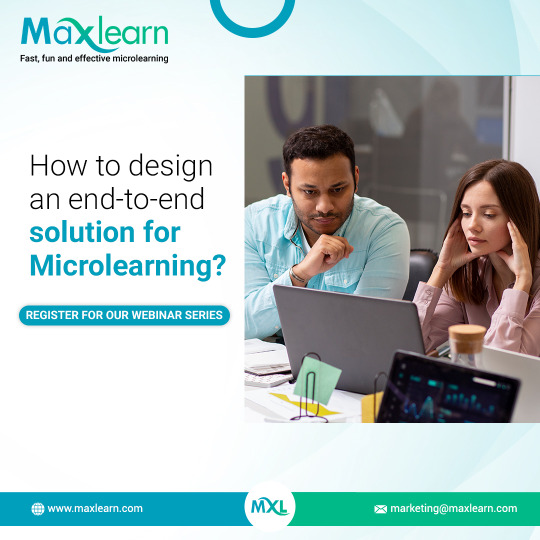
In the rapidly evolving landscape of education and professional development, traditional approaches to learning are being redefined. The advent of technology has paved the way for microlearning, a dynamic method that offers compact, focused learning experiences tailored to the needs of modern learners. At the forefront of this revolution is the MaxLearn Methodology, a comprehensive framework designed to harness the power of microlearning for maximum impact.
Understanding Microlearning
Microlearning is a learning strategy that delivers content in small, digestible units, typically ranging from a few minutes to around 15 minutes in length. Unlike traditional long-form courses, microlearning focuses on specific learning objectives, making it ideal for busy individuals seeking efficient and effective ways to acquire new knowledge and skills. By breaking down complex topics into bite-sized chunks, microlearning promotes better retention and application of information.
The MaxLearn Advantage
The MaxLearn Methodology takes Microlearning to the next level by incorporating cutting-edge instructional design principles and innovative technology solutions. Let's explore the key pillars of the MaxLearn Methodology that set it apart:
1. Personalization
One of the most significant advantages of the MaxLearn Methodology is its emphasis on personalization. Recognizing that every learner is unique, MaxLearn tailors learning experiences to meet individual needs, preferences, and learning styles. By leveraging learner data and feedback, MaxLearn delivers customized content that resonates with learners personally, increasing engagement and motivation.
2. Interactivity
Engagement is essential for effective learning, and interactivity lies at the core of the MaxLearn Methodology. Through interactive elements such as quizzes, simulations, and branching scenarios, learners actively engage in the learning process. Interactive microlearning modules not only capture learners' attention but also foster critical thinking, problem-solving skills, and decision-making abilities.
3. Micro-Assessments
Assessment is a critical learning component, and the MaxLearn Methodology integrates micro-assessments seamlessly into the learning experience. By incorporating brief quizzes, knowledge checks, and performance evaluations throughout the learning journey, MaxLearn enables learners to gauge their understanding and progress in real time. Immediate feedback helps learners identify areas for improvement and reinforces learning objectives, leading to better outcomes.
4. Just-In-Time Learning
In today's fast-paced world, information becomes outdated quickly. The MaxLearn Methodology recognizes the importance of just-in-time learning, delivering relevant content precisely when learners need it most. Whether it's troubleshooting a problem at work or mastering a new skill on the go, MaxLearn provides timely and accessible learning resources that empower learners to succeed in real-world situations.
Empowering Learners, Transforming Organizations
The MaxLearn Methodology represents a paradigm shift in the way we approach learning and development. By harnessing the power of microlearning and incorporating principles of personalization, interactivity, assessment, and accessibility, MaxLearn empowers learners to reach their full potential and organizations to thrive in an ever-changing environment.
In conclusion, the MaxLearn Methodology is not just a tool for delivering information—it's a catalyst for transformation. By embracing microlearning and leveraging innovative instructional design techniques, MaxLearn is revolutionizing the way we learn, work, and grow. Whether you're an individual looking to expand your knowledge or an organization seeking to enhance employee performance, MaxLearn offers a powerful solution that delivers results. Join the microlearning revolution with MaxLearn and unlock your true learning potential.
#microlearning#micro learning#adaptivelearning#adaptive learning#aifortraining#ai for training#learningpersonalization#learning personalization#microlearningplatforms#microlearning platforms#ailms#ai lms#adaptivelearningplatforms#adaptive learning platforms#gamifiedlms#gamified lms#lmswithgamification#lms with gamification#lmswithai#lms with ai#adaptivelearningsoftware#adaptive learning software#adaptivelearningtechnology#adaptive learning technology#gamifiedlearningmanagementsystem#gamified learning management system#learningmanagementsystemgamification#learning management system gamification#artificialintelligencelearninganddevelopment#artificial intelligence in learning and development
0 notes
Text
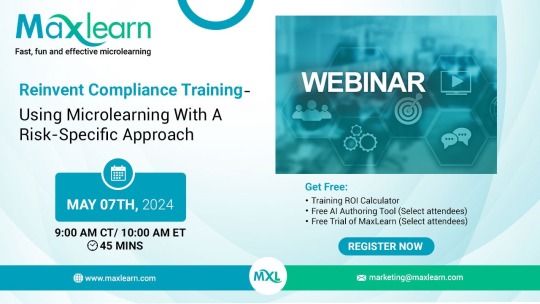
Reinvent Compliance Training–
Using Microlearning With
A Risk-Specific Approach
Ask almost any employee, and they’ll tell you, “It’s long, it’s boring, and most of the stuff I know already.” In this webinar, we will show compliance learning can be fast, fun, and effective.
We will cover:
Micro-targeting based on risk profiling–Integrating compliance risks to job functions to deliver training to the employees who need it.
Learning Goals—Automated assignment of the right learning levels to the right employees as Goals.
Microlearning—Use of short bursts of learning targeted at specific learners based on their risk profile.
Knowledge Growth and Retention—Use of adaptive spaced repetition of content to allow information to be retained and knowledge to grow over time.
Reward and Recognition—Game mechanics at play to promote learner engagement.
We invite you to our groundbreaking discussion on how to deliver a fast, fun, and effective risk-specific compliance training.
Register Now!
#Reinvent Compliance Training#Risk-Specific Approach#risk specific training#microlearning#microlearning platform#spaced repetition#adaptive learning
0 notes
Text
Benefits of Microlearning: Quick Learning for Busy Lives

Introduction Summary
In today's fast-paced world, traditional learning methods are rapidly evolving to meet the demands of modern workforce learners. One innovative approach that has gained significant attention in recent times is microlearning. This method breaks down educational content into smaller, easily digestible modules, providing learners with short bursts of information. Let's explore the benefits of microlearning and why it is becoming a game-changer in the field of knowledge acquisition and professional development.
Introduction
In the hustle and bustle of our modern lives, finding time for continuous learning can be a challenging endeavor. As the demands of our time increases, traditional learning methods may seem impractical. This is where microlearning steps in, offering a convenient and effective solution for individuals with busy lives. In this blog, we will explore the numerous benefits microlearning brings to quick learners navigating through hectic schedules.
What is Microlearning?
Microlearning is a learning strategy that involves delivering content in small, easily digestible chunks. Instead of traditional hours-long lectures or extensive courses, microlearning breaks down information into bite-sized modules that typically last for a few minutes. The content is designed to be focused on a specific learning objective, making it concise and to the point. These modules can take various forms, including infographics, videos, quizzes, and interactive simulations.
Benefits of Microlearning
Here are the benefits that microlearning offers to modern learners.
Flexible and Time-Efficient Solution
One of the primary advantages of microlearning is its flexibility. Learners can access bite-sized modules at their convenience, making it easy to integrate into busy schedules. Microlearning recognizes the time constraints of busy individuals. With short, targeted lessons, learners can easily fit microlearning modules into their schedules. Whether it's during a coffee break or while commuting, these bite-sized modules make learning more accessible. Microlearning modules allow learners to acquire new skills or knowledge in a short span of time. The efficiency of microlearning is particularly beneficial for busy professionals who need to stay updated without dedicating extended periods of time to learning.
Increased Engagement and Retention
Research suggests that learners are more likely to retain information when it is presented in smaller and focused chunks. Microlearning leverages this principle, promoting better retention of key concepts. Learners can revisit and reinforce their knowledge more frequently, enhancing long-term retention. Short, focused lessons are more likely to keep learners engaged compared to lengthy sessions. By presenting information in easily digestible chunks, microlearning modules ensure that learners stay focused and retain more information. This engagement is crucial for creating an effective learning experience and fostering a positive attitude toward continuous learning. Engage your learners by connecting them to their learning, when and where they need it using the KREDO learning platform.
Flexible Learning Paths
Microlearning solutions allow learners to choose their own learning path based on their needs and preferences. This flexibility enables individuals to focus on specific skills or knowledge areas without having to go through an entire course. Learners have the freedom to tailor their learning experience to align with their personal and professional goals. Drive personalized learning based on learner's preferences in KREDO.
Mobile-Friendly Approach
Smartphones and other portable devices make microlearning solutions highly accessible. Learners can engage with the material from virtually anywhere, breaking down the barriers of traditional classroom settings. This adaptability ensures that learning can happen on the go, fitting seamlessly into busy lives. Whether on a computer, tablet, or smartphone, microlearning modules are easily accessible anytime, anywhere. This accessibility promotes a learner-centric approach, adapting to the individual's preferred pace and schedule. Create beautiful, fully responsive, and mobile-friendly microlearning modules using Prodient.io, a new-age eLearning authoring tool.
Cost-Effective Solution
Microlearning often involves the use of digital platforms, reducing the costs associated with traditional training methods. Organizations can save on resources such as printed materials, training venues, and travel expenses. This cost-effectiveness makes microlearning an attractive option for both individuals and businesses. The modular structure of microlearning solutions allows organizations to create and update content easily and efficiently, reducing development and maintenance costs.
Adaptable to Various Learning Styles
Different people have different learning preferences. Microlearning platforms often use adaptive learning technologies to tailor content to individual needs. Microlearning solutions can incorporate a variety of media, including videos, infographics, quizzes, and interactive elements. This adaptability caters to diverse learning styles, ensuring that the content resonates with a wide range of learners. This personalized approach ensures that learners receive content that is relevant and challenging, leading to a more effective learning experience.
Real-Time Application
Microlearning solutions often focus on practical, real-world scenarios. This immediate applicability of knowledge allows learners to bridge the gap between theory and practice seamlessly. Quick learners can apply what they have learned right away, reinforcing the learning experience. In the rapidly evolving world of today, staying current with industry trends and advancements is crucial. Microlearning solutions enable individuals to stay abreast of the latest developments without committing to lengthy courses that may become outdated.
Conclusion
Microlearning is a transformative approach to education, tailored to meet the needs of today's busy lives. With its time efficiency, increased retention rates, flexibility, and customization options, microlearning is proving to be a powerful tool for individuals and organizations. Microlearning solutions are a game-changer for busy individuals seeking efficient and impactful learning experiences. Microlearning empowers learners to acquire new skills and knowledge on their own terms. As the demand for lifelong learning continues to grow, microlearning stands as a beacon of innovation, ushering in a new era of education tailored to the needs of modern, busy individuals.
At Tesseract Learning, we’ll discuss your challenges and work with your team in understanding your business needs, learner expectations, and technology environments. If you wish to know how our services, KREDO learning platform, and Prodient.io authoring tool can help your organization in developing effective microlearning solutions for your employees, contact us or write to us at [email protected].
0 notes